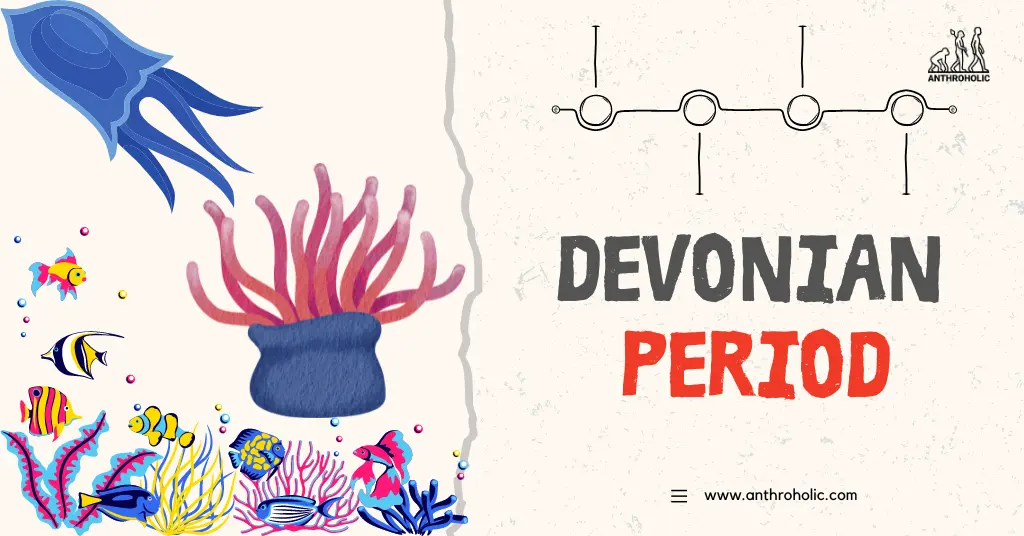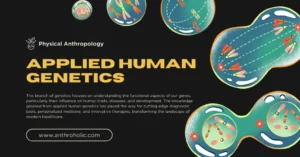AI Answer Evaluation Platform Live Now. Try Free Answer Evaluation Now
Devonian Period
The Devonian Period, roughly spanning from 419.2 million to 358.9 million years ago, is often referred to as the “Age of Fishes” [1]. It witnessed a significant increase in the diversity of marine life forms and a shift in the continental configuration, all of which have significantly impacted life on Earth.

Geological and Climate Changes
The Devonian was a period of great geological activity. Many of the world’s current landforms began to take shape during this time, significantly influencing global climate.
Continental Drift and Mountain Building
During the Early Devonian, most of the Earth’s land was gathered in the supercontinent of Gondwana [2]. However, by the end of the period, another landmass, Euramerica, began to form, leading to the creation of the Appalachian Mountains [3].
| Landmass | Events |
|---|---|
| Gondwana | Formed during the Early Devonian |
| Euramerica | Began to form towards the end of the period |
Climate
The Devonian climate was warm and varied, with drastic temperature changes leading to significant marine and terrestrial adaptations.
- Early Devonian: It was marked by warm temperatures, with high sea levels covering much of the continents [4].
- Late Devonian: The climate cooled, and there were signs of glaciation towards the southern pole of Gondwana [5].
Biological Evolution
The Devonian period saw an abundance of diverse life forms, each evolving to survive in their unique environments.
Marine Life
Often referred to as the “Age of Fishes”, the Devonian saw an explosion in the variety of fish species. Fish evolved from being jawless to having jaws and bony structures. It also saw the emergence of the first sharks and bony fish [6].
- Jawless Fish: They were the dominant species in the Early Devonian.
- Jawed Fish: By the end of the period, jawed fish overtook their jawless counterparts.
- Sharks and Bony Fish: The first known species of these appeared during the Devonian.
Terrestrial Life
Significant changes also occurred on land during the Devonian. The first land-dwelling arthropods and the first true forests emerged during this period [7].
- First Land-Dwelling Arthropods: The evolution of arthropods onto land was a monumental step in Earth’s biological history.
- First True Forests: This period also witnessed the first forests, mainly composed of lycophytes, ferns, and horsetails.
Plant Life
Plants experienced dramatic diversification during the Devonian. They began the period as small, simple organisms but ended it as large, complex trees.
- Early Devonian: Plants were small and lacked complex tissue systems.
- Late Devonian: The first seeds appeared, and plants became more complex, with true roots, leaves, and vascular tissues.
The Late Devonian Extinction
The Devonian Period ended with one of the five major mass extinctions in Earth’s history, known as the Late Devonian Extinction. Up to 75% of all species were lost during this event, mainly due to changes in the environment, including fluctuating sea levels and climate changes [8].
The Devonian Atmosphere
As life on land began to take shape during the Devonian period, the atmosphere too underwent dramatic changes.
Oxygen Levels
The concentration of oxygen in the Earth’s atmosphere began to rise during the Devonian period, primarily due to the spread of land plants [9]. These plants, through photosynthesis, produced oxygen, leading to its higher concentration in the atmosphere.
- Early Devonian: Atmospheric oxygen levels were lower, and carbon dioxide levels were much higher than today.
- Late Devonian: As land plants became widespread, oxygen levels rose significantly, and carbon dioxide levels decreased.
Impact on Life
The increase in oxygen concentration had profound implications for life on Earth.
- Terrestrial Life: The higher oxygen concentration facilitated the development of terrestrial life, particularly arthropods, which depend on ambient oxygen for respiration [10].
- Marine Life: The increase in oxygen levels may also have contributed to the diversification of marine life.
Human Significance of the Devonian
The Devonian period might seem distant and irrelevant to our modern lives, but it has significantly shaped our current world.
Fossil Fuels
Much of the coal, oil, and natural gas we use today were formed from the remains of Devonian plants and marine organisms. This period’s immense plant growth laid down the organic matter that would become our major energy resources [11].
Geological Formations
The mountain-building events of the Devonian, such as the formation of the Appalachian Mountains, have left a significant geological record. These mountains are now home to a variety of plant and animal species, providing diverse ecosystems [12].
Understanding Evolution
Finally, the dramatic evolutionary events of the Devonian period provide crucial evidence for understanding how life on Earth has evolved. From the development of jaws in fish to the evolution of land plants, the Devonian is a key chapter in the history of life [13].
Conclusion
The Devonian period was a transformative era in Earth’s history, setting the stage for the complex terrestrial ecosystems that would eventually emerge. Its rich geological and biological legacy continues to influence our world, shaping both our natural environments and our human societies.
References
[1] Brett, C.E. et al. (1995). “The Age of Fishes”. American Scientist.
[2] Stanley, S.M. (1999). Earth System History. New York: W.H. Freeman and Company.
[3] Milner, A.C. et al. (2002). “Continental drift and mountain building”. Geological Society, London, Special Publications.
[4] Harper, D.A.T. et al. (2017). “Climate of the Devonian Period”. GSA Bulletin.
[5] Joachimski, M.M. et al. (2009). “Climate changes in the Late Devonian”. Palaeogeography, Palaeoclimatology, Palaeoecology.
[6] Friedman, M. (2007). “The Evolution of Fishes during the Devonian Period”. Journal of Paleontology.
[7] Kenrick, P. and Crane, P.R. (1997). “The origin and early evolution of plants on land”. Nature.
[8] McGhee Jr, G.R. et al. (2013). “Late Devonian Extinction: A Review of the Evidence, Theories, and Causes”. Paleobiology.
[9] Berner, R. A. (2009). “Phanerozoic atmospheric oxygen: New results using the GEOCARBSULF model”. American Journal of Science.
[10] Dudley, R. (1998). “Atmospheric oxygen, giant Paleozoic insects and the evolution of aerial locomotor performance”. Journal of Experimental Biology.
[11] Thomas, B.A. (2002). “The formation of fossil fuels”. Journal of the Geological Society, London.
[12] Adams, M.B. et al. (2006). “The Appalachian Region: A natural history”. Journal of American History.
[13] Clack, J.A. (2012). “Gaining Ground: The Origin and Evolution of Tetrapods”. Indiana University Press.




